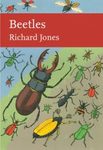About this book
The 36 species of the Platynus degallieri species group are revised. Twenty-five species are newly described: Platynus robustulus, n. sp., P. platynellus, n. sp., P. machetellus, n. sp., P. elliptolellus, n. sp., P. brunnellus, n. sp., P. caerulipennis, n. sp., P. rotundatulus, n. sp., P. minusculus, n. sp., P. stenophthalmus, n. sp., P. angustulus, n. sp., and P. decorellus, n. sp. from México; P. bacatellus, n. sp., P. crypticulus, n. sp., and P. imitativus, n. sp. from México and Guatemala; P. marginissimus, n. sp. from Mexico, Guatemala, and El Salvador; P. rugulellus, n. sp., and P. nevermanni, n. sp. from Costa Rica; P. margaritulus, n. sp., P. barbarellus, n. sp., P. woldai, n. sp., P. flavomarginatus, n. sp., P. mimulus, n. sp., and P. purpurellus, n. sp. from Panamá; P. nitidulus, n. sp. from Costa Rica and Panamá; and P. baorucensis, n. sp. from Dominican Republic. Acupalpus striatulus Reiche, 1843 is synonymized with Anchomenus aeneipennis Dejean, 1831 (new synonymy). Glyptolenopsis Perrault, 1991 is considered a junior synonym of Platynus Bonelli, 1810 (new synonymy).
New combinations include Platynus degallieri (Perrault) and P. aeneipennis (Dejean). A key for the identification of the species is provided, and each species treatment includes a synonymy, diagnosis, description, and distributional information. Three Mexican species, close outgroups of the degallieri group, are also described: Platynus pygmaeus, n. sp. from Chiapas and Oaxaca; P. ballorum, n. sp. from Puebla; and P. franiai, n. sp. from Guerrero and Oaxaca. Cladistic analysis based on 59 unit-coded characters is performed on the 36 ingroup taxa. Eleven outgroup taxa are included in the analysis to facilitate character polarization within the degallieri group, and to obtain a preliminary assessment of recent classificatory attempts on the Neotropical Platynus. Patterns of character state change are compared between male and female reproductive characters, and found to corroborate Eberhard's hypothesis of female choice as a determinant in genitalic evolution. Areas of endemism are defined by the distributions of geographically restricted species within the aggregate species-group distributional range, and include the Hispaniolan, Cuban-Bahamian, Mexican, northern Mexican, northern Central American, lower Central American, and South American areas.
Area relationships are determined using component analysis. The time of origin of the species group is hypothesized to be Miocene to Oligocene, based on the sister area relationship of northern México with México plus northern Central America--that relationship dated Miocene in the sympatric platynine carabid genus Elliptoleus Bates. The Antillean areas of endemism are ambiguously related either to the Mexican plus northern Central American areas, or to the lower Central American plus South American areas. An Oligocene to Miocene colonization of the Antilles at approximately the time of origin of the species group is consistent with these relationships. The lower Central American diversification can be dated as post-Miocene, corresponding to the Talamancan orogeny in Costa Rica and Panama. The South American area has been recently colonized by two widespread species of the group, and its area relationships are probably due more to recent range expansion than to an accretionary geological event. Information on habitats occupied by the species is presented.
Elevational ranges are used as a measure of the stability of habitats occupied by the various species. Brachypterous taxa are shown to occupy ecologically more stable, higher elevational habitats. This association is shown to be based on a relatively limited number of historical events whereby ancestral brachypterous taxa came to occupy high elevation habitats, with repeated vicariance without habitat change increasing the diversity of such clades. Habitat relationships are compared to those predicted under the taxon cycle and taxon pulse hypotheses. Three possible radiations – 12 mainland and Antillean species, a subset of this clade comprising 7 Antillean species, and a clade of 19 mainland species of which 12 are found in lower Central America – are tested for conformity to taxon cycle predictions using a randomization test. All sets of empirical data fail to demonstrate significant action of a taxon cycle during the ecological diversification of the group.
Customer Reviews






























![Icones Insectorum Europae Centralis: Coleoptera: Scarbaeoidea: Geotrupidae, Trogidae, Glaresidae, Lucanidae, Ochodaeidae, Glaphyridae [English / Czech]](http://mediacdn.nhbs.com/jackets/jackets_resizer_medium/24/242733.jpg?height=150&width=106)



![Guide des Coléoptères d'Europe [Guide to the Beetles of Europe]](http://mediacdn.nhbs.com/jackets/jackets_resizer_medium/23/238721.jpg?height=150&width=106)






